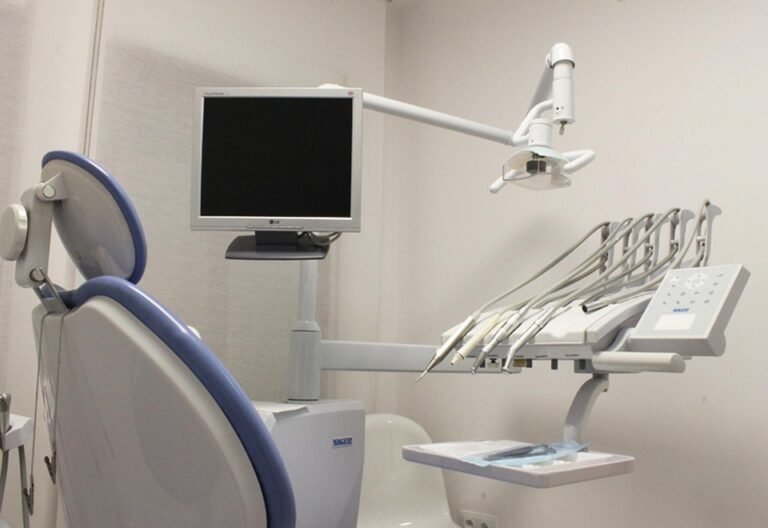How can I collaborate with other healthcare professionals or influencers
Okay, so I’m a registered dietitian with my own private practice. I’m trying to grow my reach and offer more value to my clients and potential clients. I think partnering with other people in the healthcare space would be a great way to do that.
But I’m not really sure how to go about it. I’m a bit shy and haven’t done much networking. Specifically, I’m interested in:
- Finding relevant people: How do I even find other dietitians, doctors, therapists, fitness instructors, or even health and wellness bloggers who might be open to collaborating? Where do I look besides just cold emailing?
- Coming up with valuable collaboration ideas: What are some concrete things we could do together? I’m not just thinking about joint social media posts (although that’s part of it!), but more substantial collaborations. Maybe webinars? Shared programs? I’m open to ideas.
- Reaching out and making a good impression: What’s the best way to approach someone for collaboration without sounding pushy or desperate? What should I say in that initial email or message? And what should I not say?
- Dealing with different levels of experience/influence: What if I’m approaching someone who is much more established than me? How do I frame the collaboration in a way that is mutually beneficial?
- Legal/ethical considerations: Are there any legal or ethical things I need to be aware of before collaborating, especially if we’re creating content together?
- Measuring success: How can I track if the collaboration is actually working and benefiting my practice? What metrics should I be looking at?
Basically, I need a complete guide on how to effectively and professionally collaborate with others in the healthcare and wellness field. Any advice would be greatly appreciated!
Answer
Collaborating with other healthcare professionals and influencers can significantly expand your reach, credibility, and impact within the healthcare space. Successful collaborations require careful planning, clear communication, and a shared vision.
I. Identifying Potential Collaborators:
- Define Your Goals: Before reaching out, clarify what you hope to achieve. Are you aiming to increase brand awareness, educate a specific patient population, promote a new service, or advocate for a particular health issue? Your goals will shape the type of collaborator you seek.
-
Identify Relevant Professionals:
- Within Your Field: Consider colleagues with complementary specialties, research interests, or patient demographics. For example, a cardiologist might collaborate with a registered dietitian or a pulmonologist with a respiratory therapist.
- Across Disciplines: Look for professionals in related fields who can offer a different perspective or reach a new audience. A physical therapist might collaborate with a pain management specialist or a psychologist with a primary care physician.
- Healthcare Influencers: These are individuals with a strong online presence, credibility, and engagement within the healthcare community. They may be medical professionals, patient advocates, health bloggers, or social media personalities. Evaluate their audience demographics, content quality, and authenticity. Look for influencers whose values align with yours.
-
Consider the Following Criteria:
- Expertise and Credibility: Do they have the necessary qualifications, experience, and reputation in their field? Verify credentials and look for evidence of expertise, such as publications, presentations, or board certifications.
- Audience and Reach: Does their audience align with your target demographic? Analyze their follower demographics, engagement rates, and website traffic (if applicable).
- Values and Alignment: Do their values and beliefs align with yours and your organization’s? Review their past content and statements to ensure consistency.
- Communication Style: Do they communicate clearly, effectively, and professionally? Consider their communication style and whether it resonates with your audience.
- Availability and Interest: Are they available and interested in collaborating on your proposed project? Assess their workload and willingness to commit time and effort.
-
Networking Opportunities:
- Conferences and Workshops: Attend industry events to meet potential collaborators in person.
- Professional Organizations: Join relevant organizations to connect with professionals in your field.
- Online Communities: Participate in online forums, social media groups, and professional networking platforms like LinkedIn.
- Referrals: Ask colleagues for referrals to potential collaborators.
II. Approaching Potential Collaborators:
- Personalized Outreach: Avoid generic emails or messages. Research the individual and tailor your message to their specific interests and expertise.
- Clear and Concise Communication: Clearly state your purpose, goals, and proposed project. Explain how the collaboration would benefit both parties.
- Highlight Mutual Benefits: Emphasize the value proposition for the potential collaborator, such as increased visibility, access to new audiences, or opportunities for professional development.
- Professional Tone: Maintain a professional and respectful tone throughout your communication.
- Call to Action: Clearly state what you are asking the potential collaborator to do, such as schedule a call to discuss the project further.
III. Types of Collaboration:
-
Content Creation:
- Guest Blogging: Write a guest post for each other’s blogs or websites.
- Co-authored Articles: Collaborate on research papers, review articles, or opinion pieces.
- Webinars and Online Courses: Co-present webinars or create online courses together.
- Social Media Campaigns: Develop and execute joint social media campaigns.
- Infographics and Visual Content: Collaborate on the creation of infographics, videos, or other visual content.
- Podcasts: Co-host podcast episodes.
-
Research and Innovation:
- Joint Research Projects: Collaborate on research studies, clinical trials, or data analysis.
- Grant Applications: Apply for grants together to fund collaborative projects.
- Product Development: Collaborate on the development of new healthcare products or technologies.
-
Educational Initiatives:
- Continuing Medical Education (CME) Programs: Develop and deliver CME programs for healthcare professionals.
- Patient Education Materials: Create educational resources for patients, such as brochures, videos, or online guides.
- Workshops and Training Programs: Co-lead workshops or training programs for healthcare professionals or patients.
-
Advocacy and Outreach:
- Public Awareness Campaigns: Collaborate on campaigns to raise awareness about specific health issues.
- Policy Advocacy: Work together to advocate for policies that support public health.
- Community Outreach Programs: Participate in community outreach programs together.
-
Cross-Referrals:
- Refer patients to each other’s practices or services.
IV. Collaboration Agreements and Logistics:
- Define Roles and Responsibilities: Clearly outline each collaborator’s roles, responsibilities, and contributions to the project.
- Establish Timelines and Deadlines: Set realistic timelines and deadlines for each stage of the project.
- Determine Content Ownership and Usage Rights: Clearly define who owns the content created during the collaboration and how it can be used.
- Discuss Financial Considerations: If the collaboration involves financial compensation, clearly outline the payment terms and conditions.
- Formal Agreements: Consider creating a formal agreement or memorandum of understanding (MOU) to outline the terms of the collaboration. Legal review is advisable.
- Communication Plan: Establish a clear communication plan, including regular meetings, email updates, and project management tools.
- Project Management Tools: Utilize project management tools (e.g., Asana, Trello, Monday.com) to track progress, manage tasks, and facilitate communication.
V. Maintaining Successful Collaborations:
- Open and Honest Communication: Maintain open and honest communication throughout the collaboration.
- Mutual Respect: Treat each collaborator with respect and value their contributions.
- Regular Check-ins: Schedule regular check-ins to discuss progress, address challenges, and ensure that everyone is on the same page.
- Flexibility and Adaptability: Be flexible and adaptable to changing circumstances.
- Recognition and Appreciation: Acknowledge and appreciate each collaborator’s contributions.
- Evaluate and Improve: After the collaboration is complete, evaluate its success and identify areas for improvement.
VI. Specific Considerations for Healthcare Influencer Collaborations:
- Transparency and Disclosure: Adhere to all relevant regulations and guidelines regarding transparency and disclosure, such as the Federal Trade Commission (FTC) guidelines. Clearly disclose any sponsored content or paid partnerships.
- Medical Accuracy: Ensure that all content is medically accurate and evidence-based. Review content with a medical professional to verify its accuracy.
- Patient Privacy: Protect patient privacy and confidentiality. Obtain informed consent before sharing any patient information.
- Ethical Considerations: Adhere to ethical guidelines and professional codes of conduct.
- Contractual Agreements: Establish a clear contractual agreement with the influencer that outlines the scope of work, deliverables, payment terms, and usage rights.
- Performance Metrics: Define key performance indicators (KPIs) to track the success of the collaboration, such as website traffic, social media engagement, or lead generation.
- Long-Term Relationships: Focus on building long-term relationships with influencers who are genuinely passionate about your brand and mission.
By following these guidelines, you can effectively collaborate with other healthcare professionals and influencers to achieve your goals and make a positive impact on the healthcare community.





